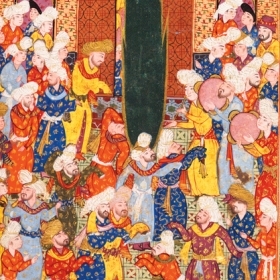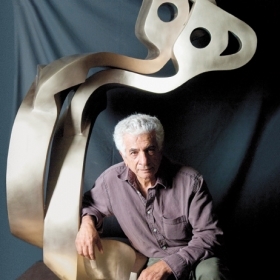Photo by Richard Howard
Peggy Levitt, professor of sociology, wrote Artifacts and Allegiances: How Museums Put the Nation and the World on Display with a broad audience in mind. “I hope my insights will be helpful as cultural institutions around the world struggle to become more relevant in the 21st century,” she says. “The people these institutions bring inside their doors must look more like the people that are outside them.”
Currently, the two sides bear little resemblance. Ethnic minorities represent only 28 percent of staff members in American art museums—most of whom work as janitors or security guards—and less than 10 percent of museum visitors.
That discrepancy, along with Levitt’s extensive research on transnational migration, inspired the book, which has been praised by the New York Times. “When I studied the experiences of Brazilians, Indians, Pakistanis, Dominicans, and Irish folks who moved to the United States, many lived their lives across borders, meaning that they voted, prayed, and invested in their homelands at the same time that they ran businesses, bought homes, or joined the P.T.A. here,” she says. “But the education system, pension system, and health care that supported them was always national, even though their lives were not.”
“This is where museums come in,” she says. “They have always helped create nations and spread national values, and in today’s global world, they can create global citizens, too.”
As Levitt studied museums in Europe, the U.S., Asia, and the Middle East, she realized they all fall somewhere along a cosmopolitan-nationalism continuum. “Some museums place a greater emphasis on the global while others err on the side of the nation,” she says.
Museums in Sweden, for example, explicitly aim to create global citizens because leaders and curators there believe that being globally engaged is a worthy goal in and of itself and will also produce a stronger nation. “The focus on the global also allows them to sidestep the black spots on the nation’s history they would rather not discuss. So they have exhibits about migration, eco-fashion, and climate change,” Levitt says. In Denmark, similar materials tell a story that reasserts the national. Objects from the Bronze Age in both countries are used to tell very different narratives.
Cultural institutions in most countries are an underutilized tool in the struggle to create successful diverse societies. “They will not solve the problems of inequality or social injustice alone, but they can help people embrace diversity, whether it be next door or across the globe,” she explains.






We ask that those who engage in Wellesley magazine's online community act with honesty, integrity, and respect. (Remember the honor code, alums?) We reserve the right to remove comments by impersonators or comments that are not civil and relevant to the subject at hand. By posting here, you are permitting Wellesley magazine to edit and republish your comment in all media. Please remember that all posts are public.